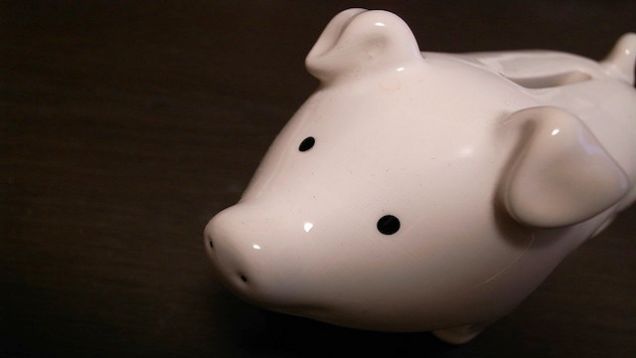I recently had the pleasure of geeking out at the Canadian Personal Finance Conference 2015, affectionately known as CPFC15. I had a good time at CPFC13 and the second kick at the bucket certainly did not disappoint. The who’s who of the personal finance community in Canada made their appearances and I was happy to connect with new and familiar faces. Rather than regale you with sightings of CPF royalty- if there is such a thing- I wanted to share an interesting viewpoint on interest rates that I hadn’t much considered before.
Related: Recap of the Canadian Personal Finance Conference 2013
CPFC, with the help of their new sponsors, secured Dave Chilton- of Wealthy Barber and Dragon’s Den fame- as the keynote speaker. Confession: I’ve never read the book or watched the show. But his reputation certainly preceded him; he’s an impressive speaker. Chilton has a very keen ability to engage an audience on topics that admittedly can be very dry. He shared some of his insights on the future of interest rates. His take: They will remain surprisingly low for a surprisingly long time. He is of the opinion that it’s going to be tough for inflation to take hold. On one hand there are the “traditional” challenges in the demographics of an aging population and lower prices due to globalization, but the driver, in his mind, for continued low interest rates is the significant deflationary potential of exponential technologies. He sees artificial intelligence, virtual reality, 3D printing as having huge deflationary impacts.
Interest rates will remain surprisingly low for a surprisingly long time due to significant deflationary potential of exponential technologies.
He cited the familiar examples of Uber and AirBnB for offering prices 40% less their respective competition. Chilton also had one very interesting hypothesis on the impact of 3D printing. You may have heard about 3D printing as a fringe hobby, but apparently it has come a long way. It is now possible to print with 285 different materials, and can be used printing for customized prosthetics and old discontinued car parts. The future of 3D printing, he believes, has the potential to disrupt the economy.
He painted a picture: “You own a bar. You’ve got a urinal. Some drunk guy breaks your urinal- happens all the time.”As the bar owner, you would need to go out and buy a new $450 urinal. “Not in five years, you don’t,” he said. “You print it. You print your own urinal.” Working backwards, he broke it down: if the urinal costs $450, it probably cost the seller $200 and the manufacturer about $80 including labour. That leaves a material cost of roughly $40. Assuming the material cost for 3D printing is 3x as much, he estimated that it would cost $120 to print a new urinal. If bar owners print their own urinals, what happens to the distribution channel? Jobs are going to be challenged, keeping inflation at a minimum. The Chilton forecast: low interest rates are going to stick around.
It’s going to be interesting to see how established industries cope with emerging disruptive technologies. Will changes come as quickly as Chilton predicts? I think they will…and when they do, will we be caught on our heels wondering how to react or will we have seen the signs and adapt to tip the scale in our favour? Don’t mind me while I sit here and chew on that for a little bit.




